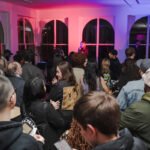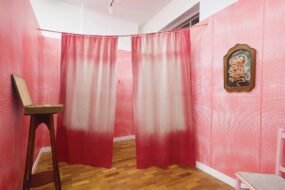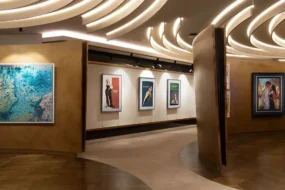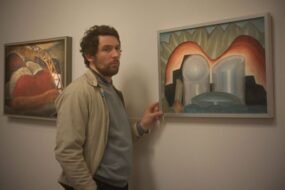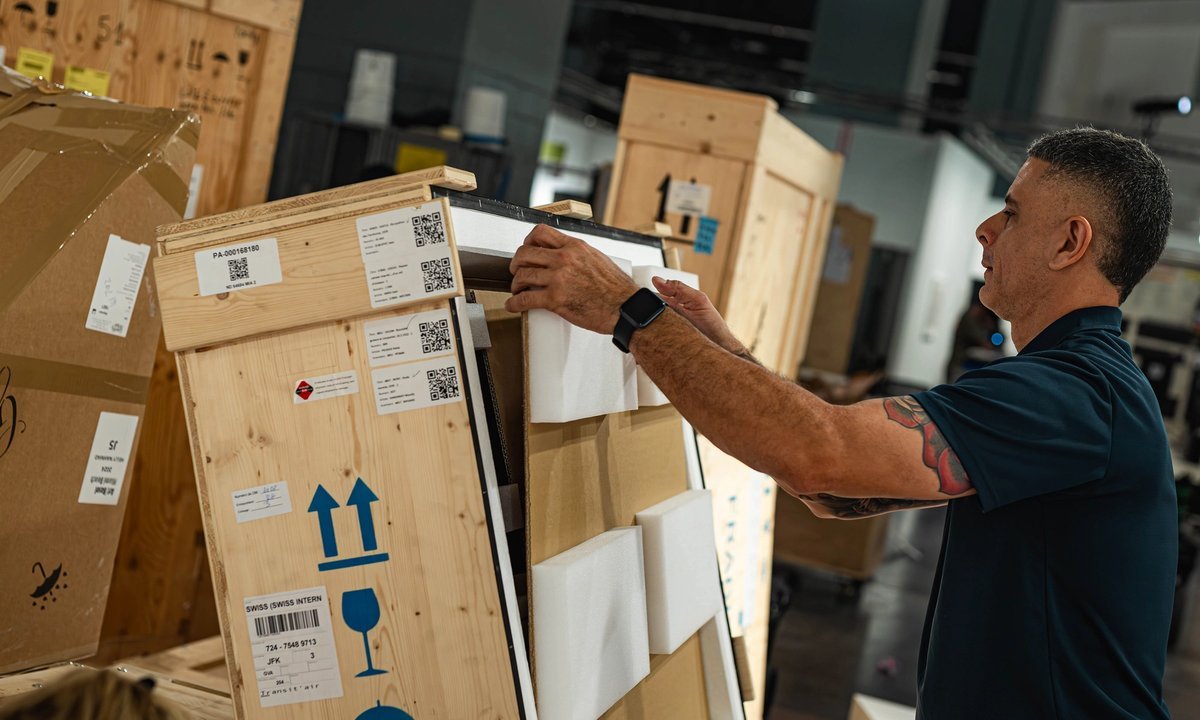
Art fairs are a bit like swans: when visitors arrive on the first VIP day, all looks serene and elegant. But what many do not see, or even think about, is the frantic work beneath the surface—or in this case behind the tent walls—to get hundreds of works shipped, hung and presented perfectly. “Behind the scenes, the entire fair operates like a carefully choreographed performance,” says Francis Petit, the director of art logistics company Gander & White’s New York office, “juggling tight schedules, co-ordinating countless moving parts and adapting to last-minute changes, often working through the night and into the early hours of the morning to ensure every artwork has its moment to shine.” From late shipments, extreme weather and difficult environments to giant works, tricky installations and artists finalising works to the wire, putting on an art fair is no mean feat. Here, galleries and shippers share some of their most dramatic art fair install tales.
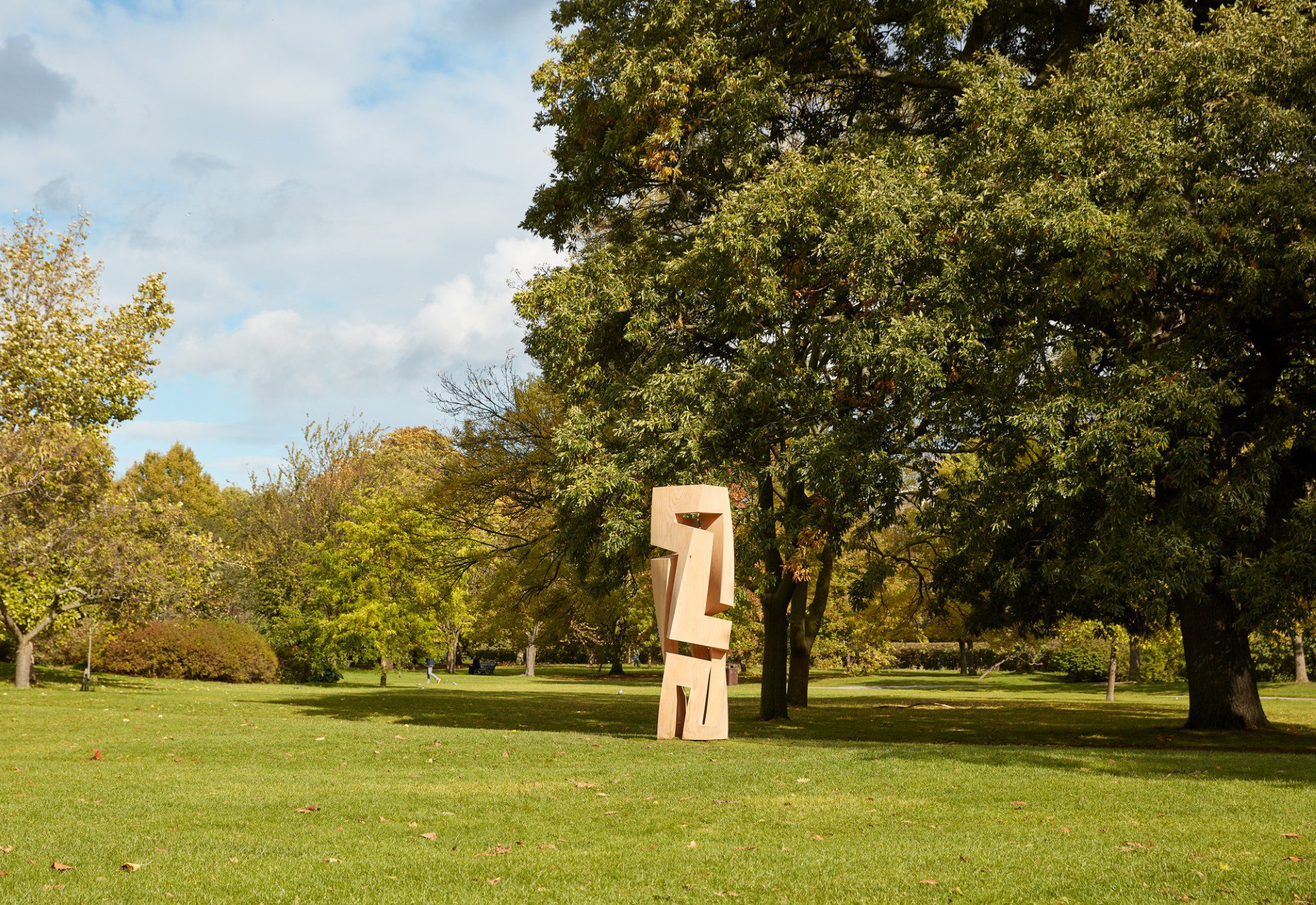
Gianpietro Carlesso’s Torre di Saba (2009) at Frieze Sculpture in 2020 Courtesy the artist and Ronchini
Lorenzo Ronchini, founder and director, Ronchini gallery
“We presented Gianpietro Carlesso’s mammoth, monumental work Torre di Saba (2009) at Frieze Sculpture in 2020. It weighs over 200kg and stands an imposing 268cm high, but the artist wanted the piece to be one with the nature that surrounds it, so he chose to not present it on a traditional plinth. Mtec, who handle the logistics for Frieze Sculpture, had to dig a hole, pour a concrete base in and add hidden pins, then put topsoil and new turf to match the surroundings of the park and hide the concrete. It required a structural engineer for the foundations and wind-load calculations. To install it were three technicians plus Carlesso and me, and the equipment included a lorry-mounted crane, a mini digger, a telehandler and a wacker plate [to compact the soil]. To complicate matters further, installation was done on a heavy rainy day! But by the end, the Lebanese tree wood of the sculpture really felt as if it grew out of the ground—a perfect embodiment of the artist’s vision.”
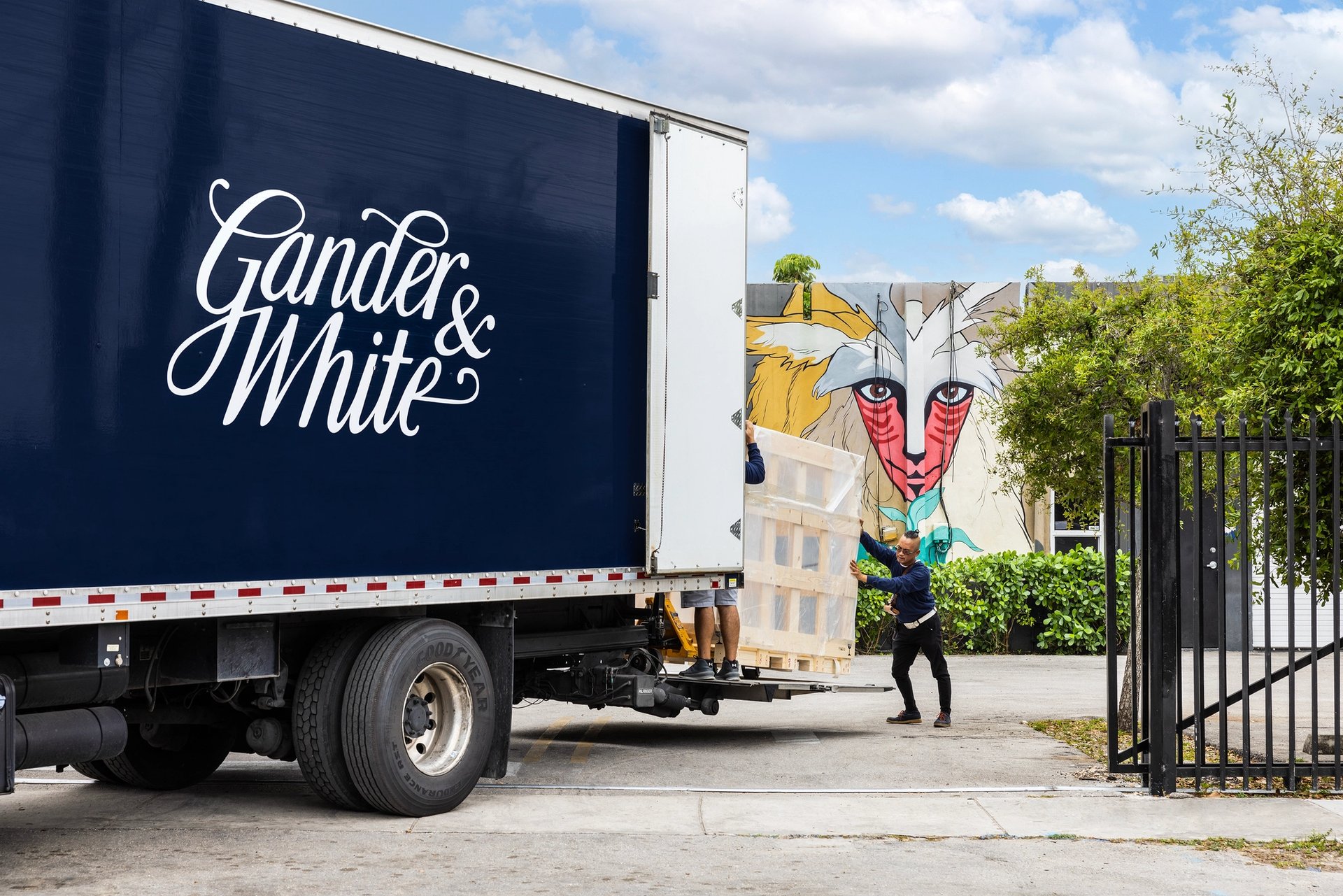
Gander & White use different types of vehicle depending on the type of work being transported Courtesy of Gander & White
Joe Piotrowski, director, Gander & White logistics in Miami
“We handled a Calder Stegosaurus sculpture for Art Basel Miami Beach in 2013. It arrived during the Thanksgiving holiday, which meant we had to make sure it was cleared and out of the airport as soon as humanly possible. To ensure it travelled safely by air, the sculpture was flown in one piece on a commercial cargo flight, securely strapped to a reinforced skid [a steel structure to support heavy loads] and covered with a tarp. Then, we had to move the sculpture from the dock to the booth where it was to be installed. It was transported on a low-ride, wide-load flatbed to avoid any overpasses or low-hanging tree issues. It needed to be inside and positioned before the walls started going up, as it was too wide to move through the aisles once the walls were in place. Moving the piece required extensive preparation and eight technicians from start to finish.”
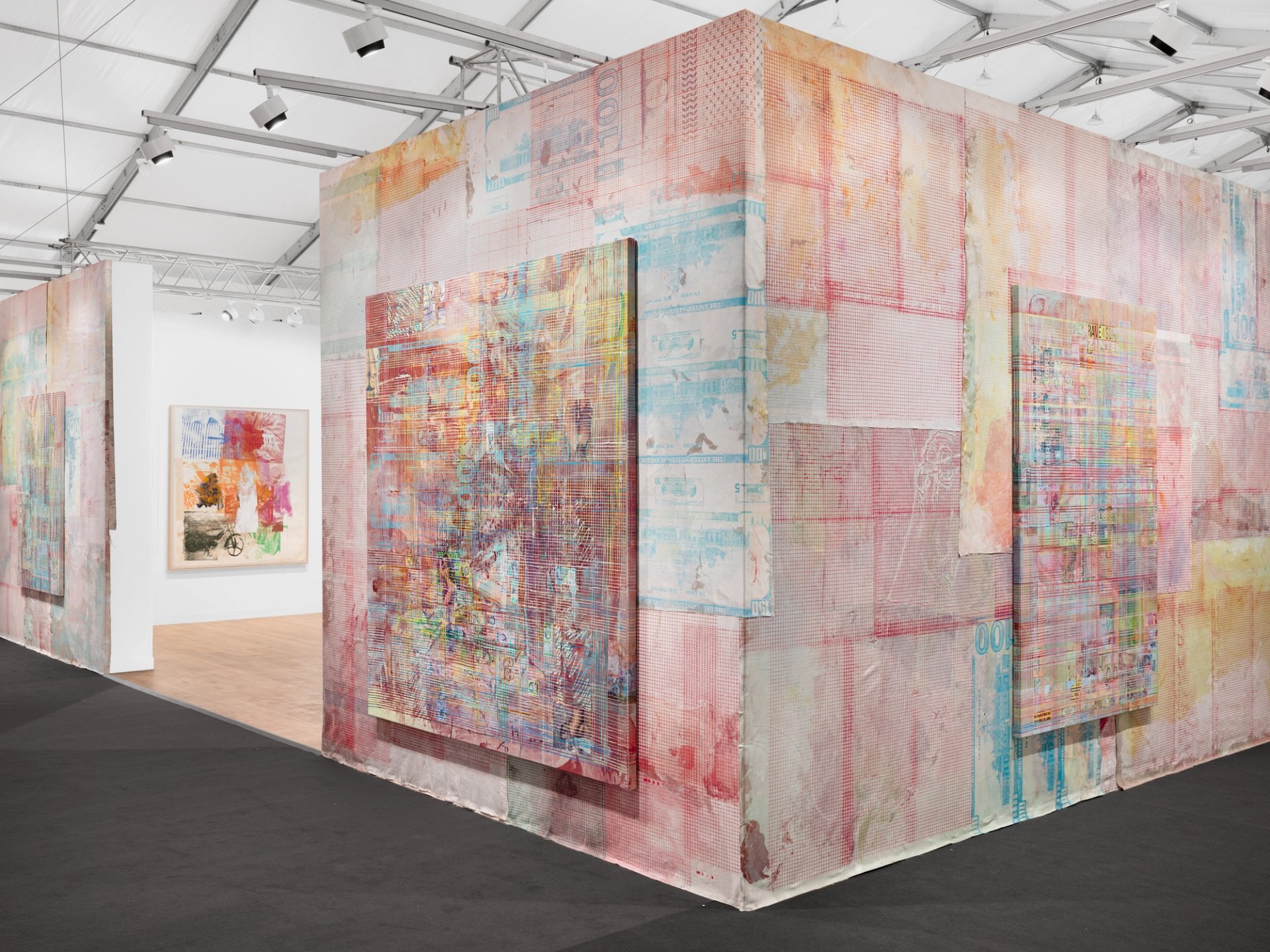
Mandy El-Sayegh’s installation at Frieze London in 2023 © Mandy El Sayegh; courtesy Thaddaeus Ropac gallery
Polly Robinson Gaer, executive director, London, Thaddaeus Ropac gallery
“For Frieze London in 2023, Mandy El-Sayegh created an installation that enveloped all four exterior walls of the booth in collaged layers of unstretched, painted canvas as the surface on which her paintings were hung. She turned the booth into an extension of her studio, embodying the ideas and process behind her work, which was a very impactful way of showing the layered language of her practice more expansively than usual in an art fair context. There was a limited timeframe within which she and her whole studio team realised this installation on-site, requiring early and late access to the fair, while the interior of the booth was simultaneously being installed.”
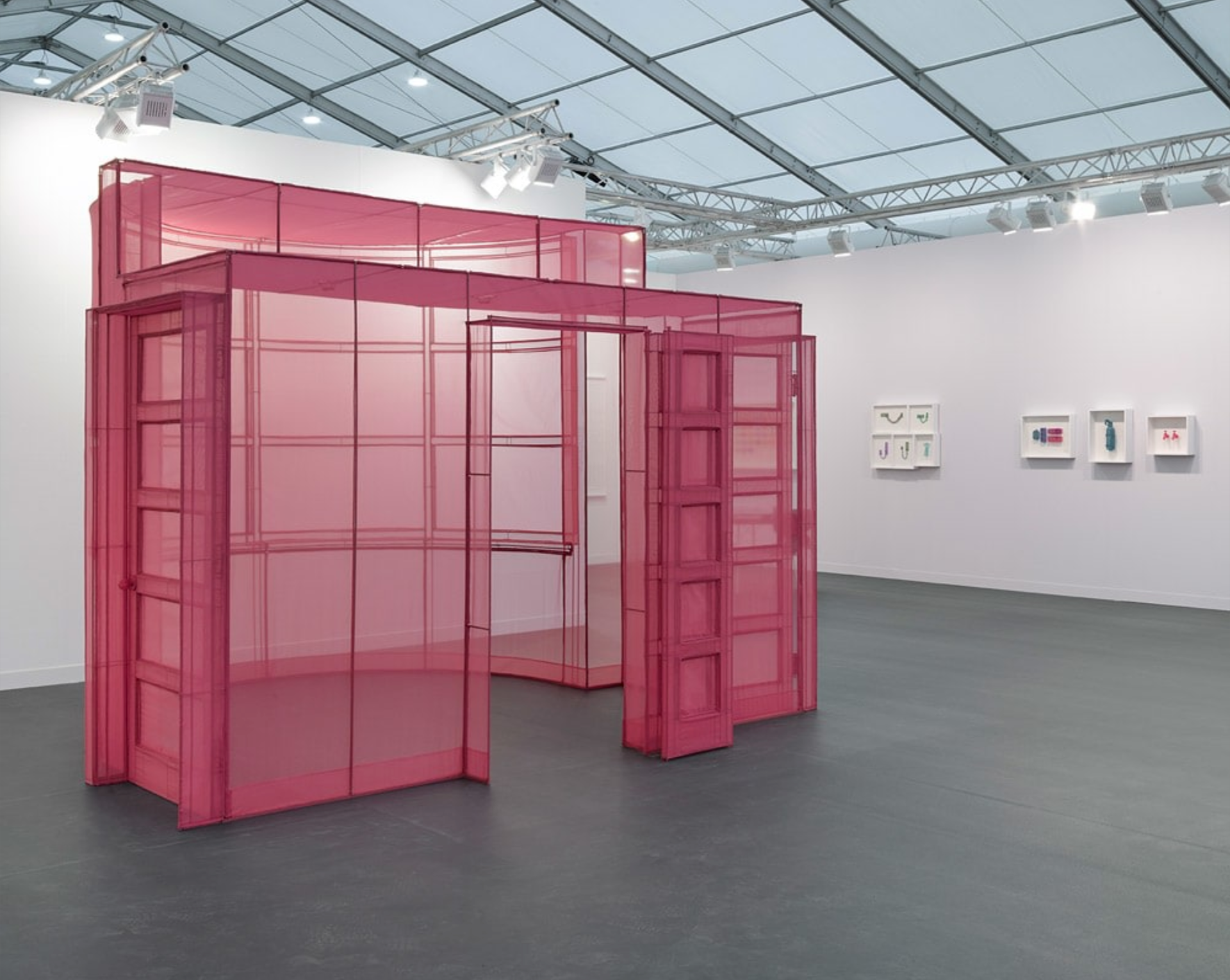
Crozier installed Do Ho Suh’s Hub-2, Breakfast Corner (2018) at Lehmann Maupin’s stand at Frieze London in 2021 Photo: Jack Hems; © Do Ho Suh; courtesy the artist and Lehmann Maupin, New York, Seoul and London
Paul Smith, director, international and art fairs, Crozier logistics
“For Frieze London 2021, Crozier was appointed by Lehmann Maupin to install Hub-2, Breakfast Corner (2018) by Do Ho Suh. This eye-catching piece is a meticulous recreation in gauzy polyester of the artist’s breakfast nook in his home in Seoul, where he once lived. It took a team of three Crozier art technicians three days to unpack, install and attach each segment in chronological order in accordance with the artist’s exact installation instructions. It was an intricate job involving hundreds of very small nuts and bolts and a keen eye for detail. Then, on the VIP day, people kept trying to touch the installation so a rope barrier had to be erected.”
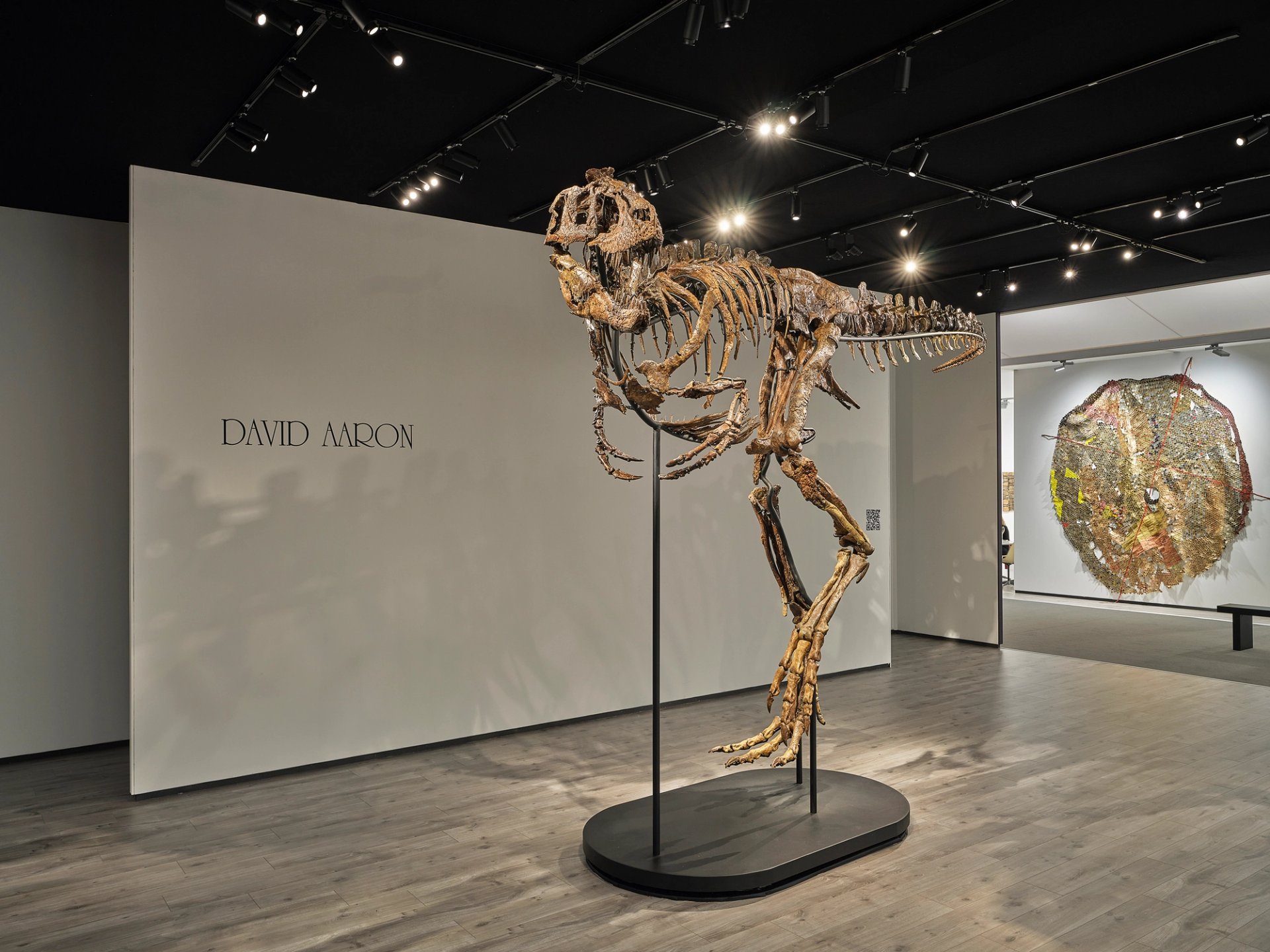
Chomper, the juvenile T. rex, travelled from Canada to David Aaron’s stand at Frieze Masters in 2023 Courtesy David Aaron
Catherine Wood, exhibitions and projects manager, David Aaron gallery
“One of our most nerve-wracking moments was at Frieze Masters 2023 when we exhibited Chomper, the juvenile T. rex. The specimen was coming from Canada, delayed in prep and only arrived the day before set-up, so any hiccup with customs or flight delays would have been catastrophic. On top of that, we had never assembled a dinosaur that size—an intricate structure made up of delicate bones, both large and small. We had to bring in specialists to guide us, adding a further layer to the co-ordination. Some bones, like thigh bones, can weigh up to 60kg. It was a feat to put everything together under enormous time pressure. The team worked around the clock, watching as the minutes ticked down. Thankfully, everything came together perfectly, otherwise we would have had a very large dino-less space on our stand!”
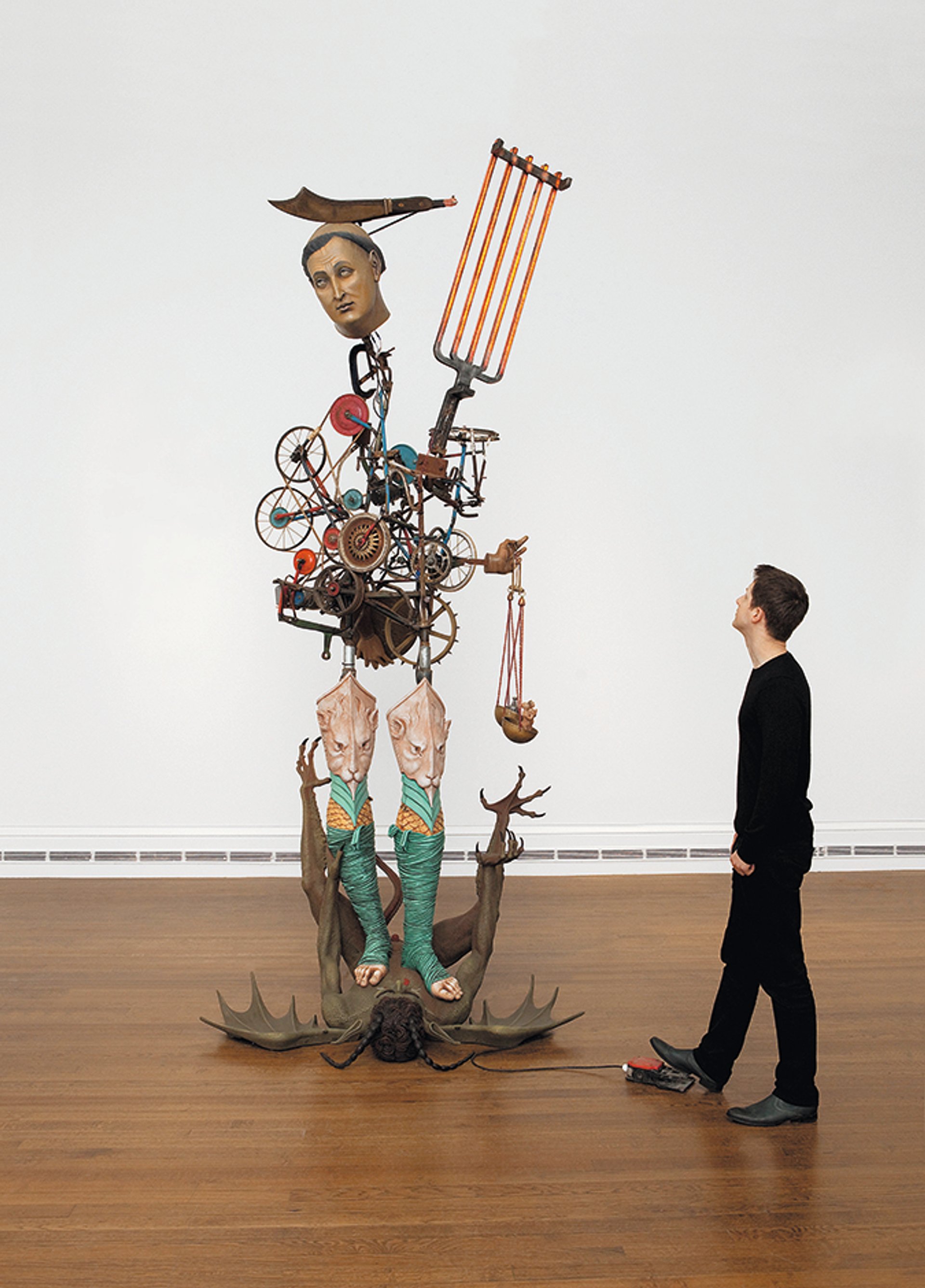
Michael Landy’s interactive sculptures Multi-Saint (2013) features on Thomas Dane Gallery’s stand at this year’s Frieze London Photo: The National Gallery London
François Chantala, partner, Thomas Dane Gallery
“We have had our fair art fair share of floor reinforcement, site-specific murals and dysfunctional electrics over the years, but nothing can ever beat Michael Landy’s Credit Card Destroying Machine (2010) at Frieze 2011, which would trade you an original, signed kinetic drawing in exchange for grinding your (valid) credit card. It had queues of people going around the block and we had to hire someone especially to operate the machine. Now, 14 years later, we have decided it is time to install another of Michael’s huge interactive sculptures; Multi-Saint (2013). It is one of his great, iconic pieces, but not only does it take two days to install, at just over 4.5m it is taller than the walls, taller than the trusses, taller than everything, and it needs its own special lighting system…”
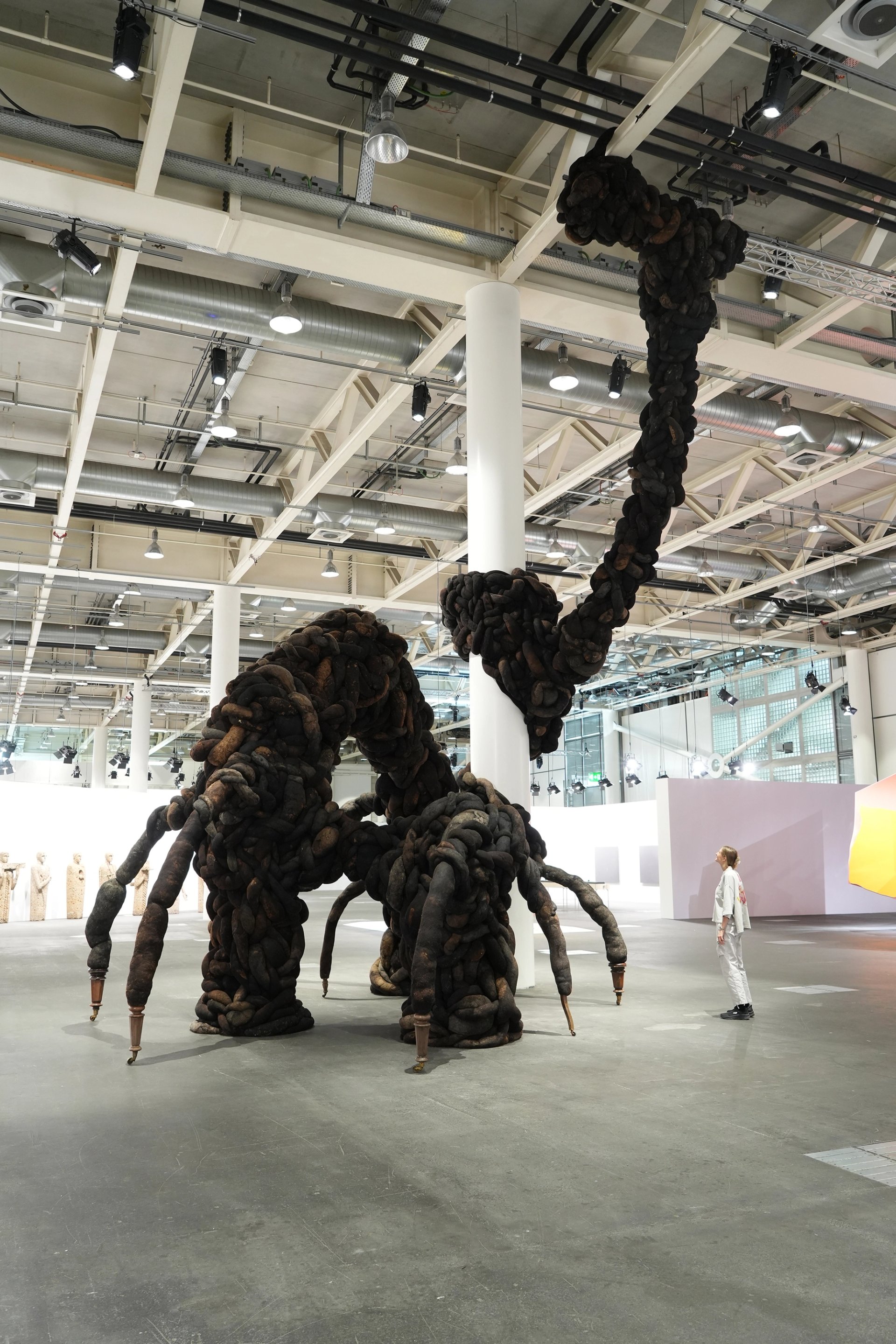
Annely Juda Fine Art’s stand at Art Basel Unlimited features Nicola Turner’s 10m-high sculpture, Danse Macabre (2025) Courtesy of Annely Juda Fine Art
Nina Fellmann, co-director, Annely Juda Fine Art gallery
“At Art Basel Unlimited this year we installed an ambitious, 10m-high sculpture by Nicola Turner called Danse Macabre (2025), which hung from the ceiling, twisted around an existing column and down on to an internal metal structure at ground level. The installation took three full days with five people—the artist and four assistants—attaching and weaving individual tendrils of wool and horse hair around the column and the internal metal structure, which we had brought from the UK. Care had to be taken not to leave any trace of the work on the column, not to exceed the weight-bearing limits, and we had to work at considerable height. It also happened to be over 30 degrees Celsius on those days!”





